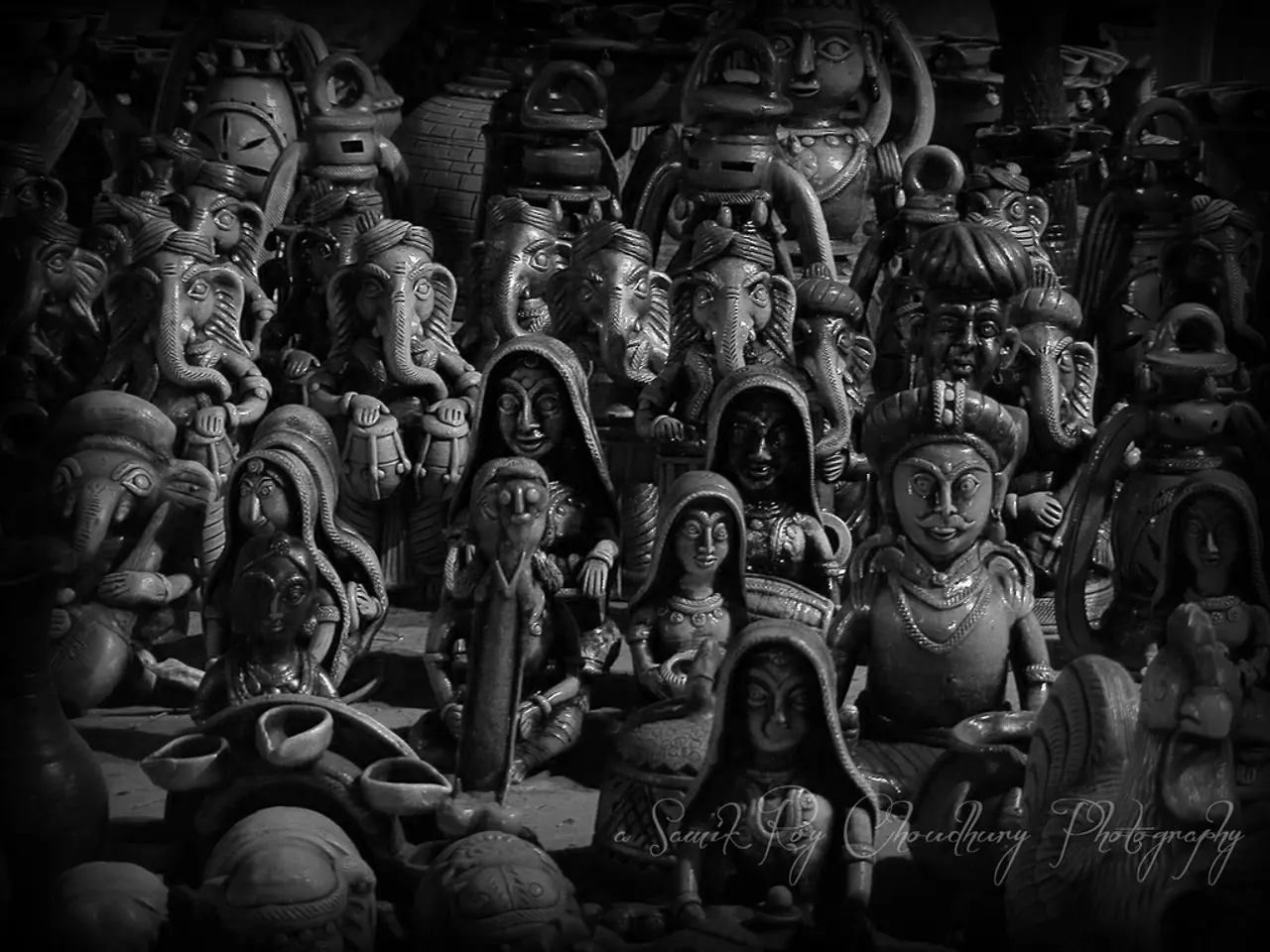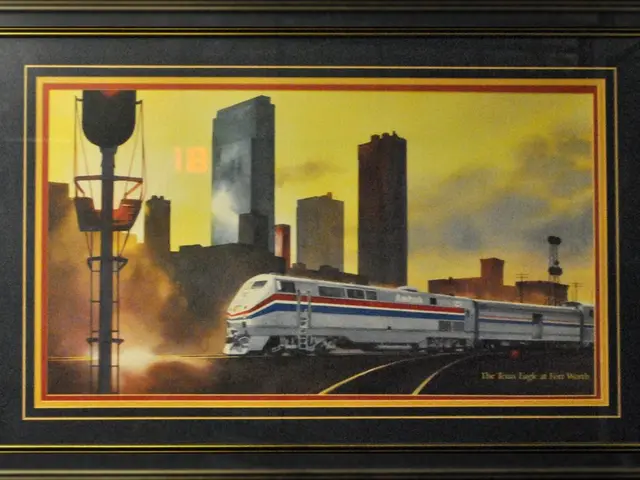Culturally Significant Films in Indian Cinema: A Lasting Impact
Honoring Iconic Films: A Tribute to the Foundation Stones of Indian Cinema
Indian cinema has a rich history of producing films that not only entertain but also resonate deeply with audiences. Here, we take a look at six iconic films that have left an indelible mark on the industry and continue to inspire today.
Mughal-e-Azam (1960)
Directed by K. Asif, this epic historical drama is one of the most celebrated films in Indian cinema. Set against the backdrop of the Mughal Empire, it tells the tragic love story of Prince Salim (played by Dilip Kumar) and courtesan Anarkali (played by Madhubala). The film remains significant for its grand scale, historical themes, and its continued influence on Indian film aesthetics.
Sholay (1975)
Directed by Ramesh Sippy, this action-packed film is a cult classic. It features iconic characters such as Jai and Veeru, played by Amitabh Bachchan and Dharmendra, and Gabbar Singh, portrayed by Amjad Khan. Blending drama and emotion, Sholay has become a part of Indian popular culture. The film redefined the "buddy cop" dynamic, introduced high-quality action choreography, and inspired a wave of dialogue-driven cinema.
Mother India (1957)
Directed by Mehboob Khan, this film is iconic for its portrayal of a strong, resilient female protagonist (played by Nargis) who fights against societal odds. Showcasing themes of maternal love, sacrifice, and the struggles of rural India, Mother India continues to resonate with audiences today.
Pyaasa (1957)
Directed by Guru Dutt, this film critiques urban life and societal norms through powerful storytelling and cinematography. Considered one of the greatest films of all time, Pyaasa highlights themes of love, loss, and the disillusionment with modern life.
Awaara (1951)
Raj Kapoor's film represents the city as both a dream and a nightmare, exploring themes of identity and social justice. It showcases the darker side of urban life and the struggle for justice.
Mughal-e-Azam and Sholay are especially notable for their historical and cultural significance. Mughal-e-Azam was released during the golden decade of Indian cinema (1960s) and is celebrated for its grandeur and historical themes. Sholay, on the other hand, is an iconic masala film that has become a staple of Indian popular culture, known for its blend of action, drama, and memorable characters.
These films continue to matter because they not only reflect the cultural and social contexts of their time but also continue to resonate with contemporary audiences through their timeless themes and memorable characters. They have become integral to the cultural fabric of India and continue to inspire new audiences and filmmakers alike.
These films are available on various OTT platforms like Amazon Prime, Netflix (in some regions), and also in restored versions on YouTube or DVD. Sholay, released in 1975, was directed by Ramesh Sippy and blended Western cinematic tropes with Indian storytelling, introducing the concept of the "masala film". Mughal-e-Azam was a pioneer in Indian cinema's shift to color, with the famous "Pyar Kiya To Darna Kya" song shot in technicolor.
The influence of these films goes far beyond the screen, shaping everything from music and fashion to everyday language and our shared cultural memory. Mughal-e-Azam was re-released in color in 2004, finding a new generation of admirers. Sholay has been digitized and continues to be streamed globally.
When cinema is crafted with heart and intention, it can transcend passing trends, evolving technologies, and even time itself. Sholay's dialogues, music, and characters have become catchphrases, icons, and cornerstones of pop culture. Mughal-e-Azam set the benchmark for historical epics in Indian cinema, raising audience expectations for scale, visual aesthetics, and emotional intensity.
These films explored timeless themes like love, loyalty, honor, and sacrifice, yet were told through a lens that felt uniquely Indian, allowing them to leave a lasting impact on audiences across generations. Their influence extends beyond the films themselves, shaping the direction of Indian cinema and contributing to its global recognition.
Other films considered landmark contributions to Indian cinema include Mother India, Pakeezah, Deewar, and Dilwale Dulhania Le Jayenge. These films redefined what Indian cinema was capable of and expanded the very boundaries of what cinema in India could dream to become. They are more than just highlights in the timeline of Indian cinema; they're the very foundation on which the modern industry stands.
These films were crafted with meticulous attention to detail, featuring lavish sets, real gold foiling, and detailed craftsmanship in costumes and decor. They are considered the pillars of Indian cinema due to their cinematic innovation, emotional and cultural resonance, and timelessness.
- Indian cinema's rich history includes not only entertaining films but also those that deeply resonate with audiences, such as comedies, animations, action movies, romances, dramas, and more.
- Various OTT platforms like Amazon Prime, Netflix, and YouTube offer these culturally significant films, including restored versions, for modern audiences to enjoy.
- Mughal-e-Azam, released in 1960, stands out for its grandeur and historical themes, while Sholay, released in 1975, is celebrated for its blend of action, drama, and memorable characters.
- The themes explored in these films, like love, loyalty, honor, and sacrifice, are timeless and feel uniquely Indian, leaving a lasting impact on audiences across generations.
- Cinema can transcend trends, technologies, and even time itself when crafted with heart and intention, as shown by films like Sholay and Mughal-e-Azam.
- Indian cinema's landmark contributions also include Mother India, Pakeezah, Deewar, and Dilwale Dulhania Le Jayenge, which redefined the industry's boundaries and established the foundation for the modern Indian cinema.
- Mughal-e-Azam was a pioneer in Indian cinema's shift to color, with its iconic "Pyar Kiya To Darna Kya" song shot in technicolor.
- Sholay introduced the concept of the "masala film," blending Western cinematic tropes with Indian storytelling.
- These films' influence extends beyond the screen, shaping everything from music and fashion to everyday language and our shared cultural memory.
- Mughal-e-Azam was re-released in color in 2004, finding a new generation of admirers.
- Sholay's dialogues, music, and characters have become catchphrases, icons, and cornerstones of pop culture.
- In addition to these films, the realm of Indian cinema offers an abundance of genres, such as animation, action, romance, drama, comedy, and more.
- From the realm of entertainment, the world of sports captivates as well, with various leagues like the Champions League, NFL, soccer, WNBA, baseball, hockey, golf, and sports betting gaining popularity.
- European leagues, such as the Premier League, Serie A, and La Liga, also excite soccer enthusiasts, while racing events like Formula 1 create thrilling experiences.
- Sports analysis, mixed martial arts, tennis, and American football complement the diverse landscape of sports entertainment.
- Relationships, pets, lifestyles, fashion and beauty, food and drink, home and garden, travel, and various other aspects contribute to the rich tapestry of life, mirror-imaged in movies and TV shows.
- Movies and TV shows like comedies, animations, action films, romances, dramas, and more explore these themes, providing insight, inspiration, and entertainment.
- The entertainment industry continues to evolve, intertwining with many facets of life, making a lasting impact on global culture.
- Whether it's the roaring cheers at a soccer match, the suspense of a high-stakes golf tournament, the thrill of watching a fast-paced basketball game, or the emotional journey of a war epic, the world of movies and sports never fails to captivate and engage audiences.
- In the end, these culturally significant films and the various worlds they represent serve to connect us, to inspire us, and to remind us of the shared human experience, bringing a touch of magic to our daily lives.





